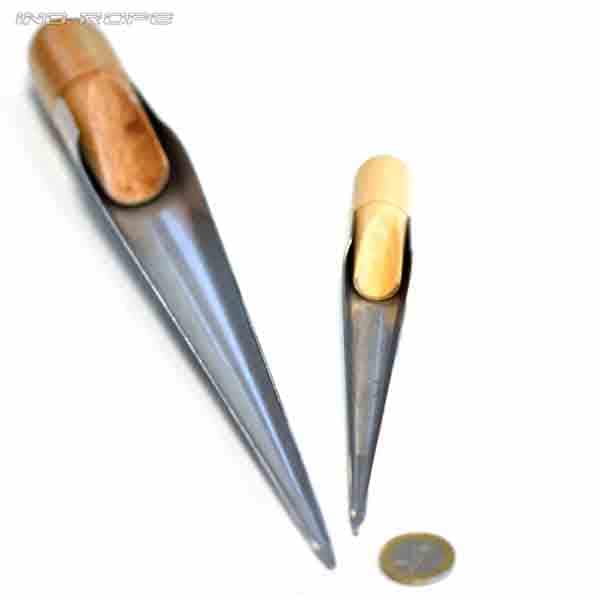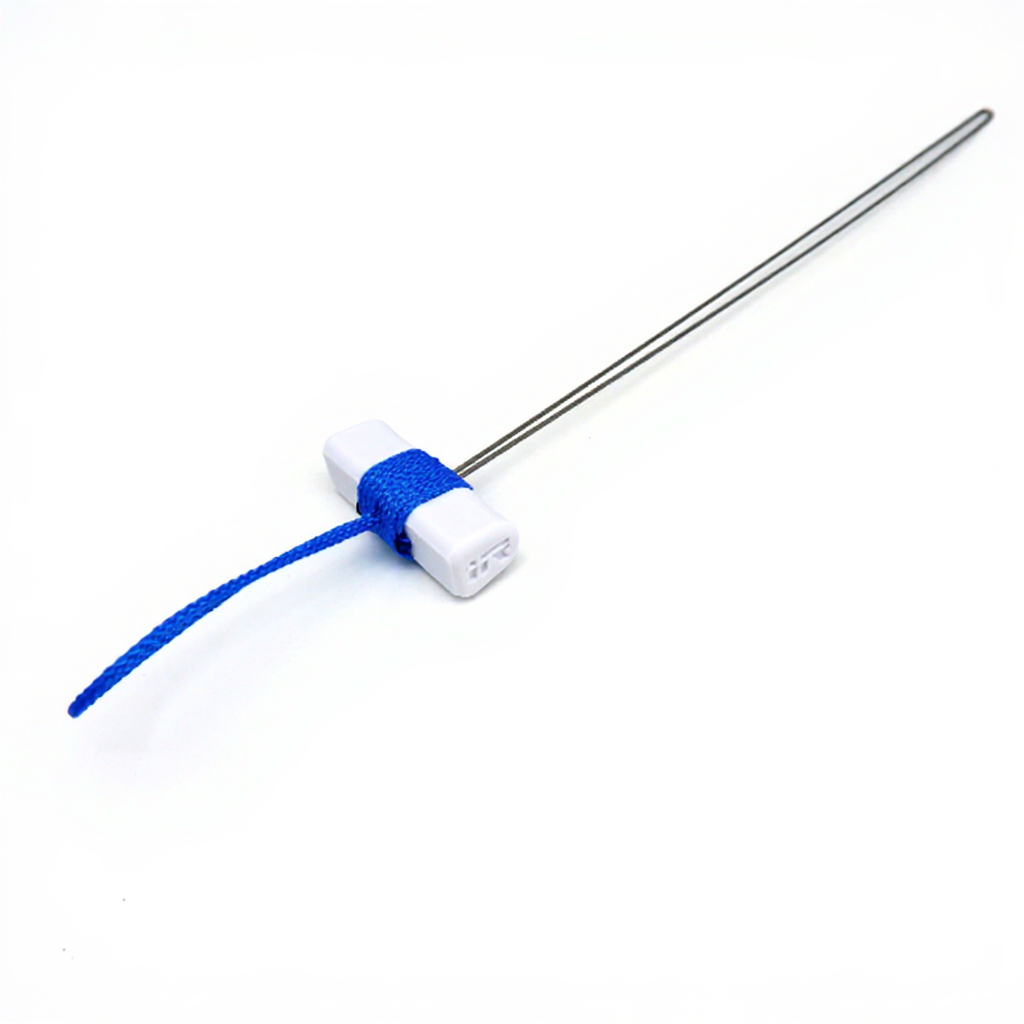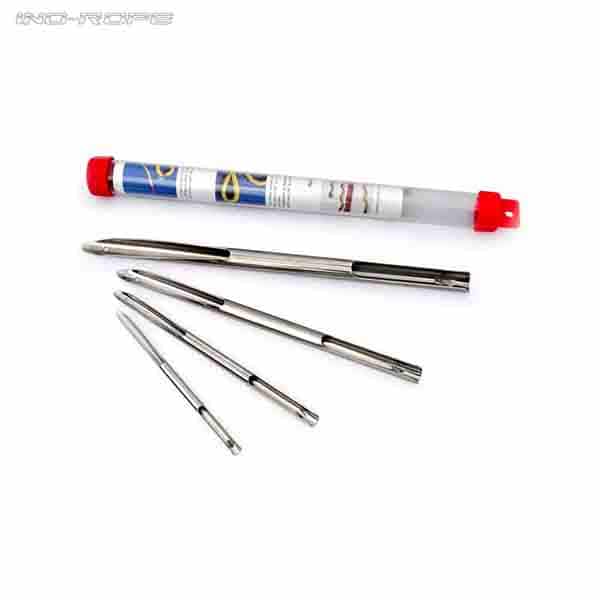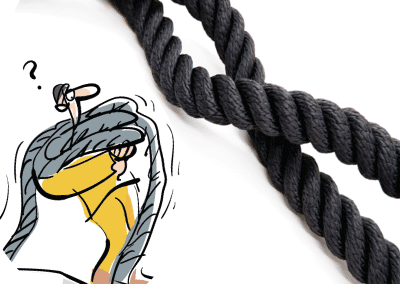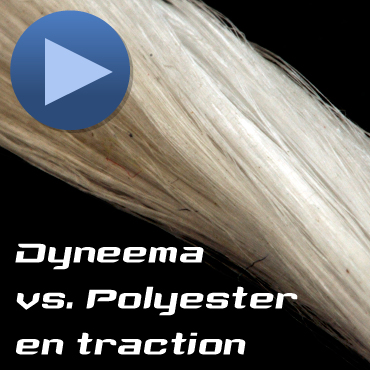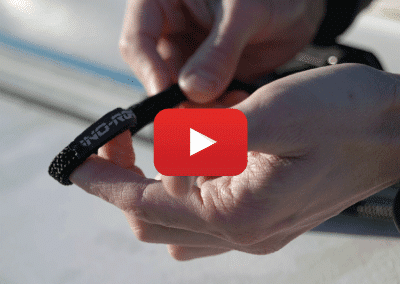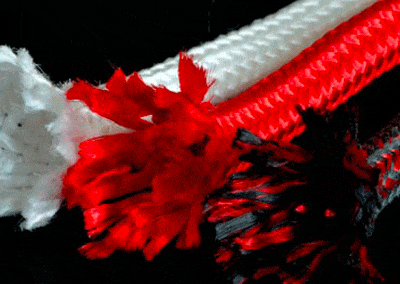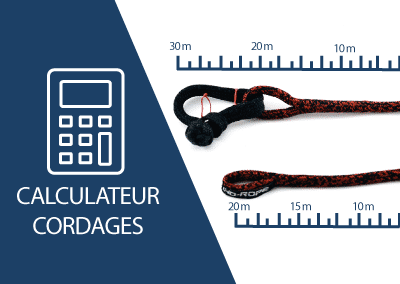
How to choose your splicing needle
How to choose your splicing needle
This practical brief about splicing needles should pique the curiosity of splicing lovers. Hollow fid or needle with long eye: Which is best for your splicing? What are their advantages and disadvantages? How can you use them and select the right diameter?
Hollow fid: intuitive and robust

How to splice with a hollow fid.
The rope to be spliced (the future core) is inserted into the hollow section, at the back of the needle. A small metal point enables the rope to be hooked and maintained in place. To splice, loosen the plaits of the braid and slide the needle into it (make sure to pass between the plaits to avoid damaging the rope). The needle is inserted into the future cover, pushing the rope towards the back of the hollow fid. The effect of this movement is “to open” the braid and enable the core to be buried inside the cover.
Choose the right diameter
Before starting a splice, it is important to choose the right needle, according to the rope diameter. In a set of hollow needles, one can find, for example, needles for 10, 8, 6, 4, 2.5 mm rope, etc. Choose the needle diameter corresponding to the rope that you wish to splice (6 mm needle for a de 6 mm rope diameter). Change needles each time you change rope diameter!
Zoom in on the benefits…
The hollow fid is a product that is intuitive and easy to use, ideal for starting rope work on board. Made of stainless steel, the hollow fid is robust and durable: it does not lose its shape even when it is forced through the rope. But never pull on it with a ply or any other tool. Once it is scratched, the surface of the hollow fid hooks onto the fibres of the rope and damages it!
And there are disadvantages!
The hollow fid is not suitable for all rope work on board. For chafe sleeves, for example, splicing the core in the cover is sometimes very difficult, even impossible. The over-thickness of the metal stops the needle from burying when the cover is very “tight” (depending on the type of fibre and the manufacturer of the rope). A needle with an interior diameter of 5.5 mm has, in fact an exterior diameter of 7 mm. Naturally, it cannot fit into a 6 mm cover!

Splicing needle with long eye: practical and versatile

Splicing with a long eye needle
A long eye splicing needle is a metal rod that is quite stiff, folded in two (forming a long eye) and ending with a handle. It works in the opposite manner of a hollow fid. The splice is realised by pulling the needle and not by pushing it. Additionally, the core is threaded into the eye (in the same way as threading a sewing needle) after having buried the needle into the rope. Let’s play the film again: the splicing needle is buried in the braid and it is pulled out; then we thread the core through the eye and pull on the handle to bury the core in the rope.
Choose the right diameter
A long eye needle is a versatile tool enabling one to work on different diameter ropes. A unique splicing needle model is sufficient for splicing ropes of 3 to 8 mm diameter. After burying and then pulling the needle out of the rope, along the length of the splice, you just need to spread open the metal rods more or less widely (the eye) according to the diameter of the core you wish to splice.
Zoom in on the benefits…
Being able to use a single needle with a long eye to splice different diameter ropes is obviously an advantage. The fact that you can pull the needle with the help of a handle instead of pushing it, as with a hollow fid, is another positive point. Not only do you have more traction strength than when pushing the fid, but it is quicker to splice, especially when there is a long section of splicing. The slimness of a long eye needle makes it much easier to pass through the plaits and inside the braid. It also makes it possible to pass between the core and the cover, which cannot be done with a hollow fid.
And there are disadvantages!
When sewing (gentlemen, this applies to you too), the thread that passes through the material is doubled, each time you insert the needle. When splicing with a long eye needle, it is the same. The core passes through the interior of the braid and is doubled when you pull on the handle to bury it into the future cover. If the rope is too “tight”, it will be impossible to pass the doubled core through its interior (so we are faced with the same problem as with a hollow fid).

A trick to succeed in splicing the core inside a tight cover: use a messenger line instead of a splicing needle!
To sum up
Hollow fid
An intuitive tool for beginners
Robustness and durability of stainless steel
A needle that is sometimes too wide to be fed through a tight cover
Splicing needle with long eye
-
 Seamanship splicer6,96 € – 15,60 € TTC
Seamanship splicer6,96 € – 15,60 € TTC -
 Long eye splicing needles for seamanship16,90 € – 24,90 € TTC
Long eye splicing needles for seamanship16,90 € – 24,90 € TTC -
 Hollow splicing fids (set of 4)34,90 € TTC
Hollow splicing fids (set of 4)34,90 € TTC


